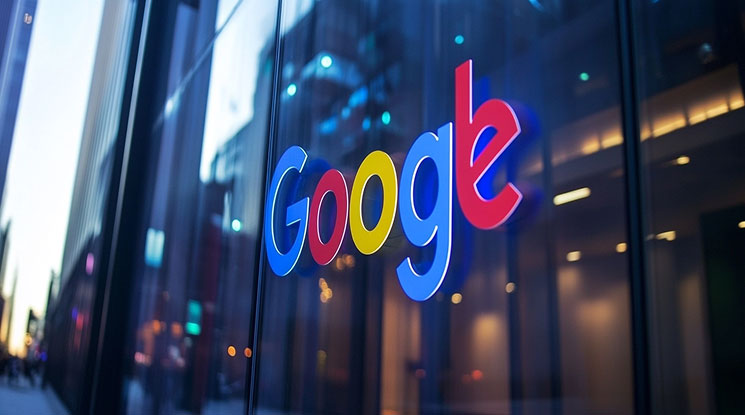ADVANCED GOOGLE RETARGETING STRATEGIES
FOR FINANCIAL PROFESSIONALS
Effectively target HNWIs and institutional investors
Google Ads retargeting is one of the most powerful tools in a digital marketer’s arsenal as It offers the ability to re-engage with potential clients who have already shown interest in your services.
In this comprehensive guide, we'll show you how to manage Google Ads retargeting using various strategies, industry standard best practices, campaign optimisation tactics, and more.
What Exactly Is Google Ads Retargeting?
It's a digital marketing strategy that allows you to display targeted ads to users who have previously visited your website or engaged with your content.
Whether they visited your homepage, checked out your fund offerings, or engaged with a blog post about financial management strategies, you can strategically show them your ads as they browse other websites in the Google Display Network (GDN), watch videos on YouTube, use Google's search engine or related products and services.
This provides a critical opportunity to stay top-of-mind for potential investors or clients.
- Standard site retargeting
- Search retargeting – (RLSA)
- Dynamic retargeting
- Video retargeting
- Customer list retargeting
- Engagement-based retargeting
- Time-delayed retargeting
- Cross-sell and upsell retargeting
- Retargeting for mobile apps
- Retargeting for event-based campaigns
- Sequential ad retargeting
- Retargeting using google analytics
- Prioritise high-value audiences
- Start with a conservative budget, then scale
- Implement bid adjustments based on device, location, or time
- Use automated bidding to maximise conversions
- Set daily budgets for consistent ad delivery
- Monitor budget pacing
- Use impression share to inform budget decisions
- Account for seasonality and market trends
- Consider lifetime budgets for campaign flexibility
Financial firms should check the following kpis and metrics:
- Segment your audience strategically
- Optimise ad creatives for trust and credibility
- Incorporate dynamic remarketing with financial-specific messaging
- Use compelling calls-to-action (ctas) specific to financial services
- Use exclusion lists to maximize ad efficiency
- Rotate ads frequently to avoid ad fatigue
- Set appropriate frequency caps
- Focus on thought leadership and value-driven content

6 Reasons Why Google Retargeting Is So Important for Financial Services?
Capitalises on High Value and Low Volume Client Base
Those catering to high-net-worth individuals (HNWIs) or institutional clients often operate with a relatively small pool of prospects - Each lead representing significant potential revenue.
And It's no secret that lengthy decision-making with high net-worth individuals is commonplace in the industry. This is why Google Ads retargeting is vital in helping helps firms remain visible to valuable prospects so no opportunity is lost.
Maintains Brand Recall in Competitive Markets
The financial services industry is highly competitive, with many companies offering similar products and services. This is where Google retargeting can strategically place your brand on other websites in front of strong prospects, even when they're researching your competitors.
Provides Targeted Audience Segmentation
Audience segmentation in retargeting campaigns offers a clever way to create tailored ads based on where users are in their decision-making journey.
For instance, a potential investor who's visited your fund performance page could be shown ads offering an in-depth report or invitation to a webinar about investment strategies.
Mitigates the Impact of Abandoned Conversions
Given the complexity and value of financial products, potential clients often start the process of engaging with a company but stop short of completing the action, such as filling out a form, scheduling a meeting, or downloading a report.
Retargeting tactics can mitigate these abandoned conversions by serving reminder ads, urging them to take the next step and complete the desired action.
Reduces Cost Per Acquisition (CPA)
Since Google retargeting focuses on users who have already shown interest in your services, it tends to deliver a higher conversion rate compared to cold outreach.
This leads to a more cost-efficient marketing effort, helping financial firms reduce their cost per acquisition (CPA) and get a better return on their marketing investment.
Targets Cross-Device Users
Clients in the financial services sector often conduct research and make decisions across multiple devices—starting on a smartphone, continuing on a desktop, and possibly even using a tablet.
Retargeting helps financial firms track and target users across different devices so they get served relevant ads regardless of the platform they are using.

Targeting Ideas For Specific Financial Audiences with Google Retargeting
High-Net-Worth Individuals (HNWIs)
For financial firms targeting high-net-worth individuals (HNWIs), remarketing plays a critical role in building relationships and showcasing premium services tailored to their unique needs.
Targeting Ideas
- Segment Based on Financial Services:
Retarget HNWIs who have visited pages offering specialised financial products, such as private equity funds, bespoke portfolio management, or wealth preservation strategies. Ads should emphasise exclusivity and personalised financial solutions to cater to their sophisticated needs. - Promote Exclusive Content:
Retarget visitors who engaged with premium content, such as performance reviews or high-value investment reports. Offer them VIP access to exclusive resources like private client webinars, bespoke reports, or invitation-only events curated specifically for HNWIs. - Tailor Messaging to Financial Milestones:
Adjust your messaging to target specific financial milestones or needs. For instance, HNWIs nearing retirement or considering wealth transfer may be shown ads for estate planning services, tax-efficient investment strategies, or customised retirement planning solutions. - Utilise Dynamic Ads:
Use dynamic remarketing to deliver personalised ads based on browsing behaviour, such as interest in luxury real estate funds, hedge fund offerings, or alternative asset investments. Tailored ads drive engagement by reflecting the individual’s previous interactions with your site.
Institutional Investors
Institutional investors, including pension funds, endowments, and foundations, often require complex and tailored investment solutions. Retargeting helps maintain engagement during long decision-making cycles.
Targeting Ideas
- Segment Based on Industry or Asset Class Interests:
Retarget institutional investors who have shown interest in specific asset classes or industries, such as infrastructure investments, emerging markets, or fixed-income strategies. Serve ads featuring performance data, fund reviews, or updates specific to these sectors. - Promote Thought Leadership and Research:
Institutional investors value comprehensive research and market insights. Retarget those who have downloaded reports or engaged with research content by offering them updated whitepapers, invitations to sector-specific webinars, or exclusive insights into future market trends and investment strategies. - Highlight Long-Term Track Records and ESG Performance:
With increasing focus on sustainability, many institutional investors seek long-term returns and ESG (Environmental, Social, and Governance) strategies. Use retargeting ads to showcase your firm’s long-term investment track record, risk management capabilities, and ESG offerings. - Offer Consultations or Strategy Sessions:
Retarget institutional investors who have expressed interest in your services but haven’t yet taken the next step. Offer free consultations, personalised portfolio reviews, or access to a senior advisor to discuss alignment with their investment goals.

Financial Advisors and Intermediaries
Financial advisors and intermediaries are key gatekeepers, often recommending products and services to their clients. Building relationships with them through retargeting is essential.
Targeting Ideas
- Segment by Professional Certifications or Interests:
Retarget financial advisors who have shown interest in niche products or professional certifications, such as socially responsible investing or retirement solutions. Serve them ads promoting professional development resources, partnership opportunities, or detailed guides on emerging financial products. - Promote Partnership and Collaboration Opportunities:
Retarget advisors with ads that highlight collaboration benefits, such as access to detailed performance reviews, advanced portfolio management tools, or client-centric resources that allow them to better serve their clients. - Offer Educational Resources:
Financial advisors are constantly seeking to stay ahead of market trends. Retarget those who have visited educational content on your website by offering on-demand webinars, investment guides, or certification programmes that keep them informed and improve their services. - Cross-Sell Advanced Financial Products:
For advisors who have expressed interest in particular products, use retargeting ads to promote complementary offerings, such as tax-efficient investment strategies, risk management solutions, or innovative portfolio diversification tools. This helps expand the breadth of services they can offer their clients.
Google Retargeting Strategies for Financial Services
Standard Site Retargeting
This involves displaying ads to past visitors as they browse websites in the Google Display Network. For example, someone who visited a hedge fund's landing page but didn't request a meeting can be shown banner ads on other financial websites including institutional investor portals, authoritative news sites, and wealth management forums.
Search Retargeting – Using Retargeting Lists for Search Ads (RLSA)
RLSA is a very popular strategy that allows you to target users when they perform searches on Google after visiting your site. This is particularly valuable for financial services where users may research extensively.
You can bid accordingly on terms like "best investment funds" or a plethora of other finance related keywords to have ads appear for previous visitors.
Dynamic Retargeting
This takes retargeting to another level by allowing you to serve personalised ads based on users' past behaviour on your website. In the context of financial services, dynamic retargeting can show tailored messages based on the type of services or funds a user was interested in.
Video Retargeting
YouTube offers video retargeting, where ads can be shown to users who have engaged with your YouTube videos. If you run a YouTube channel discussing market insights, fund performance, or investment strategies, this can be an effective way to re-engage viewers.
Customer List Retargeting
This strategy lets you upload a list of customer contact information (emails, phone numbers) to Google Ads, and Google will match these with users who are signed into Google.
This is an excellent strategy for targeting existing clients with new offerings or nurturing leads who haven't converted yet.

Engagement-Based Retargeting
Engagement-based retargeting focuses on users who engaged with specific elements, such as clicking on a call-to-action (CTA), downloading a white paper, watching a video, webinar, interacting with a financial tool, calculator etc.
Firms can create ads tailored to that specific engagement and guide users further down the funnel.
Time-Delayed Retargeting
This strategy focuses on serving ads after a set period of time has passed since a user last visited the website. As mentioned, in the financial services sector, decision-making can often be drawn out over weeks or months.
So time-delayed retargeting combats that by having ads that appear after enough time has passed to keep potential clients engaged throughout their consideration phase.
Cross-Sell and Upsell Retargeting
Financial firms can use this retargeting strategy to hone in on existing clients with cross-sell or upsell offers.
For example, a client who has invested in one fund could be shown ads for complementary investment products or portfolio management services, increasing client engagement and revenue per customer.
Retargeting for Mobile Apps
If financial firms offer mobile apps (e.g., for portfolio tracking, market analysis, or trading), they can use Google Ads to retarget users who have downloaded the app but haven't fully engaged with certain features.
Ads can prompt users to return to the app, complete the setup process, or explore additional services.
Retargeting for Event-Based Campaigns
For financial institutions that host events such as webinars, investor briefings, or conferences, retargeting can be used to target attendees with follow-up ads. These ads can promote further engagement, such as requesting a meeting, accessing exclusive content, or signing up for future events.
Sequential Ad Retargeting
This tactic serves users with ads in a specific sequence based on their interactions with your website. For example:
- Ad 1: Introduction to your services.
- Ad 2: Invitation to download a white paper or report.
- Ad 3: A call-to-action to schedule a meeting or consultation.
Sequential retargeting is effective for guiding users through complex financial decision-making processes.
Retargeting Using Google Analytics
Financial services companies can use Google Analytics data to build highly targeted retargeting lists:
- Create audiences: based on specific behaviours, such as time spent on the site or engagement with performance metrics.
- Leverage in-depth data: to create refined audience segments, such as visitors who viewed but did not fill out a contact form.
Don’t Leave Your Client Acquisition to Chance
Stop letting valuable prospects slip through your fingers. We specialise in retargeting strategies that
turn visitors into high-value clients. With our proven approach for financial services, your Ads can
start delivering results that impact your bottom line—fast.

Tips for Setting a Retargeting Budget
Prioritise High-Value Audiences
When setting your retargeting budget, it's essential to allocate a larger portion of your budget towards high-value audiences, such as those who visited key pages.
(e.g., "Investment Services" or "Fund Performance") or engaged with important content (e.g., downloading reports or requesting a consultation). These users are more likely to convert, making them worth higher investment.
Start with a Conservative Budget, Then Scale
If you're new to retargeting or launching a new campaign, it's best to start with a conservative budget.
Monitor the performance of your campaigns over a short period and increase your budget once you've identified which audience segments, ad formats, and creatives are delivering the best results. This approach helps prevent overspending in the early stages while you optimise your strategy.
Implement Bid Adjustments Based on Device, Location, or Time
Use bid adjustments to allocate your budget more efficiently:
- Device Adjustments: If your data shows that certain devices (e.g., mobile or desktop) perform better, adjust your bids accordingly to increase spend where conversions are more likely.
- Location Adjustments: Tailor your budget to specific geographic areas where you have higher conversion rates or stronger business presence.
- Time of Day Adjustments: Increase bids during peak hours when your target audience is most active, or decrease bids during off-hours to conserve budget.
Use Automated Bidding to Maximise Conversions
For financial services, where conversion values can be high, consider using Google's automated bidding strategies like Target CPA (Cost Per Acquisition) or Target ROAS (Return on Ad Spend).
These strategies leverage machine learning to automatically adjust bids based on likelihood of conversion, helping you maximise conversions within your set budget.
Set Daily Budgets for Consistent Ad Delivery
Consistently show your ads throughout the day by setting an appropriate daily budget. Spreading your budget evenly prevents your campaign from running out of funds early in the day, which could lead to missed opportunities during prime browsing times.
Adjust your daily limits based on performance data to maintain visibility throughout the entire campaign period.

Monitor Budget Pacing
It's crucial to regularly check the pacing of your budget to avoid overspending or underspending. Google Ads provides tools to monitor daily budget use, so if your campaign is spending too quickly or too slowly, adjust your bids or budgets accordingly for maximum effectiveness without exhausting resources prematurely.
Use Impression Share to Inform Budget Decisions
Impression share shows the percentage of impressions your ads are receiving compared to the total available for your target audience.
If your impression share is low due to budget limitations, you might consider increasing your financial marketing budget to capture more impressions and stay competitive, particularly in high-value markets.
Account for Seasonality and Market Trends
Certain times of the year may see an increase in demand for financial services, such as at the end of a financial quarter or during tax season.
Adjust your budget to accommodate these trends and allocate more resources during peak periods when potential clients are actively searching for investment advice or portfolio management services.
Consider Lifetime Budgets for Campaign Flexibility
Lifetime budgets allow for more flexibility in pacing ad spend throughout the duration of the campaign.
For example, using a lifetime budget with campaigns that have specific timelines, such as promoting an investment webinar or financial event can help your campaign runs smoothly from start to finish without worrying about daily limits.
Mobile Retargeting in Financial Services
Adapting Your Retargeting Strategy for a Mobile-First Audience
Mobile traffic continues to rise across all industries including the financial sector with more decision-makers and investors consuming content on mobile devices.
This is why it's important that all ad creatives and landing pages are mobile-friendly to avoid missing out on conversions.
For a seamless cross-device experience your mobile retargeting ads should provide a seamless transition between devices, so that users can easily pick up where they left off.
Creating Mobile-Optimised Ads
- Focus on Short, Concise Copy: Grab attention quickly with clear, impactful messaging that works well on small screens.
- Use Click-to-Call Extensions: For financial services, where live conversations are often crucial, add click-to-call extensions to enable immediate contact, particularly for high-value prospects.
- Speed and Performance: Mobile users expect fast-loading ads and pages. Optimise your ads and landing pages for speed to prevent drop-offs and maximise engagement.
- Utilise Location-Based Targeting: For financial institutions with a physical presence, such as private wealth management firms, use mobile location targeting to reach users near your offices to encourage local engagement.
Interactive Features for Engagement
- In-App Remarketing: Reach users through the financial apps they frequently use to promote your services within relevant financial or investment platforms and keep your brand in their consideration.
- Push Notifications: Consider integrating mobile push notifications with retargeting strategies to re-engage potential clients who have interacted with your mobile app for a direct call-to-action.

Measuring and Analysing Remarketing Performance
Advanced KPIs and Metrics
In addition to standard metrics like CTR and conversion rates, financial firms should also track the following:
- Cost Per Acquisition (CPA):
A vital metric that measures how much you spend to acquire a new lead or client. It's crucial to monitor CPA in the financial sector, where client acquisition can cost more due to longer decision-making cycles and complex services. - Return on Ad Spend (ROAS):
Essential for understanding the financial return of your Ad spending. (ROAS) can help gauge the effectiveness of retargeting efforts by measuring how much revenue is generated for every pound spent on ads. - View-Through Conversions:
These track users who saw your ad but didn't click, eventually converting through another channel. This is particularly useful in financial services where prospects often need multiple touchpoints before committing.
Additional Metrics to Consider
- Conversion Lag Time:
This metric measures the time between a user's first interaction with your retargeting ad and their final conversion. Monitoring lag time can help optimise retargeting windows and ensure ads remain effective throughout the consideration phase. - Audience Engagement Rate:
Track how engaged your retargeting audience is with content, such as ad clicks, page visits, or video views. This is especially useful for nurturing leads in the financial industry, as consistent engagement often indicates interest in services or products like hedge funds or portfolio management. - Bounce Rate from Remarketing Ads:
A high bounce rate indicates that users are not finding what they expected when they land on your site. Analysing bounce rates in your retargeting can refine your landing pages to better match user expectations and improve overall campaign performance.
A/B Testing and Performance Optimisation
- A/B Testing:
Continually test different variations of your retargeting ads, such as headlines, images, and CTAs, to identify what resonates best with your target audience. A/B testing can help financial services refine their messaging to address the unique concerns of institutional investors or high-net-worth individuals. - Ad Frequency and Saturation:
Monitor how frequently your audience is being exposed to the same ad. Overexposure can lead to ad fatigue, which could negatively impact performance. Regularly assess whether ad frequency needs adjustment to maintain engagement without overwhelming your prospects.

Best Practices for Google Remarketing in the Financial Sector (Specific to Retargeting Ads)
Segment Your Audience Strategically
Different segments of your audience are at varying stages of the decision-making process. Investors researching hedge funds may need nurturing with thought leadership content, while others may be ready to discuss fund performance and investment terms.
Segmenting based on user behaviour and tailoring your ads to match will improve your ROI.
For Example
- Cold Visitors: Showcase general brand awareness or educational content.
- Warm Leads: Offer in-depth reports, white papers, or webinars.
- Hot Leads: Provide links to schedule meetings, download fund performance summaries, or attend exclusive investor events.
Optimise Ad Creatives for Trust and Credibility
For financial services, trust is paramount. Your ads should reflect authority and credibility. Use clear and concise messaging that promotes trust. For example:
- "Explore our proven investment strategies with consistent returns."
- "Download our 2024 Market Outlook Report."
- "Discover why leading institutional investors trust [Your Company]."
Visuals should include logos, awards, and other trust signals such as financial industry affiliations or performance certifications.
Incorporate Dynamic Remarketing with Financial-Specific Messaging
Dynamic remarketing enables personalised retargeting ads based on user behaviour:
- Personalised Ads:
Display ads featuring specific fund offerings, portfolio types, or services the user previously viewed. - Promote Related Content:
Serve tailored ads featuring case studies, whitepapers, or webinars related to the user's interests, such as hedge fund performance or institutional investment strategies.
Use Compelling Calls-to-Action (CTAs) Specific to Financial Services
Use strong CTAs in your retargeting ads that align with the decision-making stage:
For Example
- Early-Stage Prospects:
Use CTAs like "Learn More About Our Investment Strategies" or "Download Market Report" to drive further engagement. - Late-Stage Prospects:
Use more direct CTAs like "Schedule a Consultation" or "Speak to a Portfolio Manager" to encourage immediate conversion.
Don’t Leave Your Client Acquisition to Chance
Stop letting valuable prospects slip through your fingers. We specialise in retargeting strategies that
turn visitors into high-value clients. With our proven approach for financial services, your Ads can
start delivering results that impact your bottom line—fast.

Use Exclusion Lists to Maximize Ad Efficiency
Exclusion lists help avoid wasting budget on irrelevant retargeting:
- Exclude Converted Users:
Once a user has become a client, exclude them from seeing standard retargeting ads and focus on upsell or cross-sell campaigns. - Exclude Unqualified Leads:
Remove users who bounced quickly or showed minimal engagement to save budget for higher-potential prospects.
Rotate Ads Frequently to Avoid Ad Fatigue
Retargeting ads can lose effectiveness over time if users see the same creatives repeatedly:
- Rotate Creatives: Refresh ad designs and messaging every few weeks to keep content engaging and prevent ad fatigue.
- Test Variations: Experiment with different CTAs, images, and offers to maintain audience interest.
Set Appropriate Frequency Caps
Avoid overwhelming potential clients by limiting how often they see your retargeting ads:
- Daily and Weekly Caps: Set a limit on how many times users see your ads in a single day and over the course of a week to avoid oversaturation and reduced engagement.
Focus on Thought Leadership and Value-Driven Content
Use retargeting ads to reinforce your firm's authority in the financial services industry:
- Promote Whitepapers, Case Studies, and Reports:
Use retargeting to drive users toward valuable resources that showcase your expertise in financial markets, hedge fund performance, or investment strategies. - Highlight Webinars and Educational Events:
Retarget users with ads inviting them to webinars or Q&A sessions led by your experts, positioning your firm as a thought leader.

Google’s Privacy Policy Requirements for Retargeting Ads in the UK Financial Services Industry
Financial Conduct Authority (FCA) Compliance
In the UK financial services industry, complying with Google’s privacy policy for retargeting ads and the (FCA) is critical.
The Financial Conduct Authority (FCA) requires financial institutions to be transparent about their data practices, and Google enforces stringent privacy requirements for data protection.
Financial services using Google Ads retargeting must clearly outline their data collection and usage practices including including how client data is handled, stored, and shared with third parties, on their website or mobile app's Privacy Policy.
This includes detailing how third-party vendors, like Google, use cookies or device identifiers to display targeted ads based on previous interactions with the website.
Businesses must also implement consent mechanisms that give users clear control over their data preferences for compliance purposes.
These disclosures are essential to Google’s privacy standards and UK financial regulations, including the Data Protection Act and the FCA’s rules on transparency and fairness.
Final Thoughts
As you can see, Google Ads retargeting is an indispensable tool as it help firms build strong connections with potential clients and investors over a long period of time.
If you haven't yet introduced retargeting into your marketing campaign, now is the time because you're likely missing out on a lot of additional clients and AUM.
Ready to see outstanding results on your Google Ads marketing or looking for expert help with your Google retargeting strategy? We know how to drastically increase your sales. Contact us today to get proven ROI on all your paid advertising campaigns.
Shane McEvoy is a financial marketing expert with over 30 years' experience in digital advertising and financial services. He founded Flycast Media, a leading financial marketing agency, and has authored several influential guides and regularly contributes to respected industry publications - read his profile.